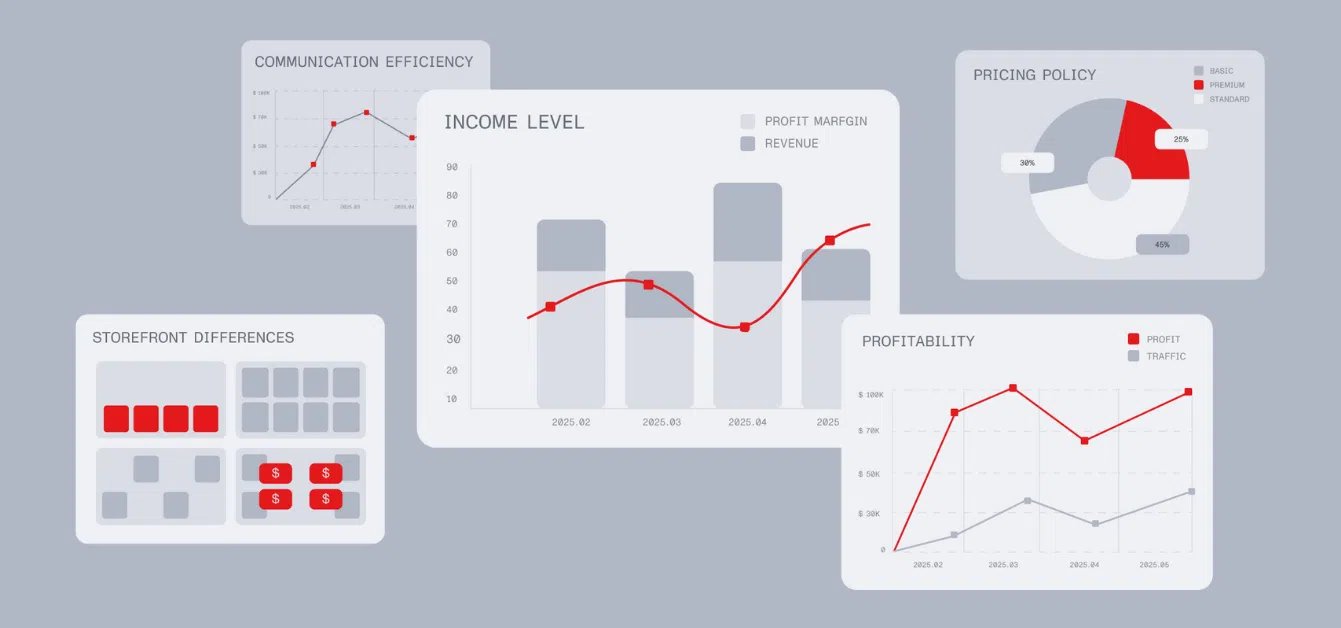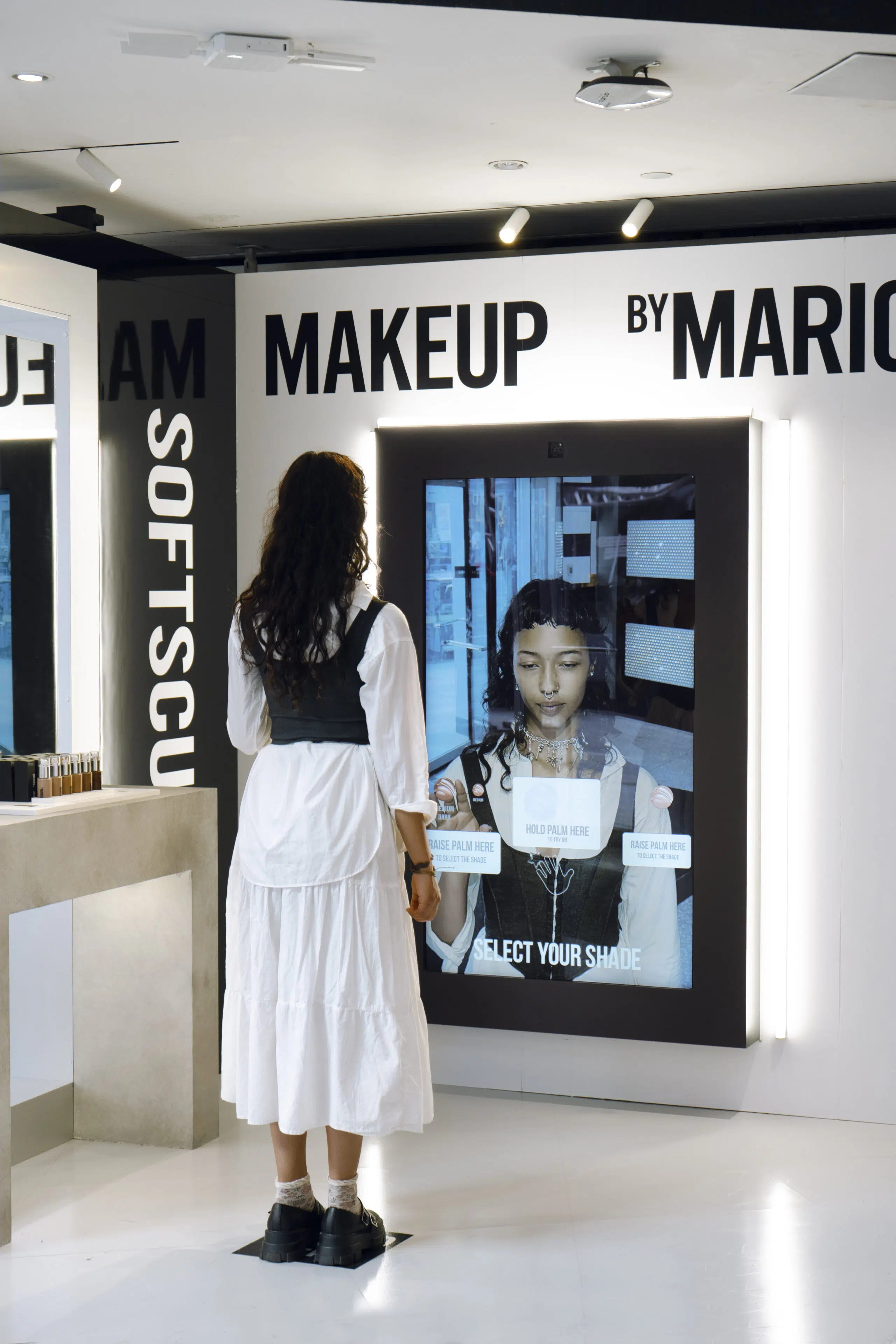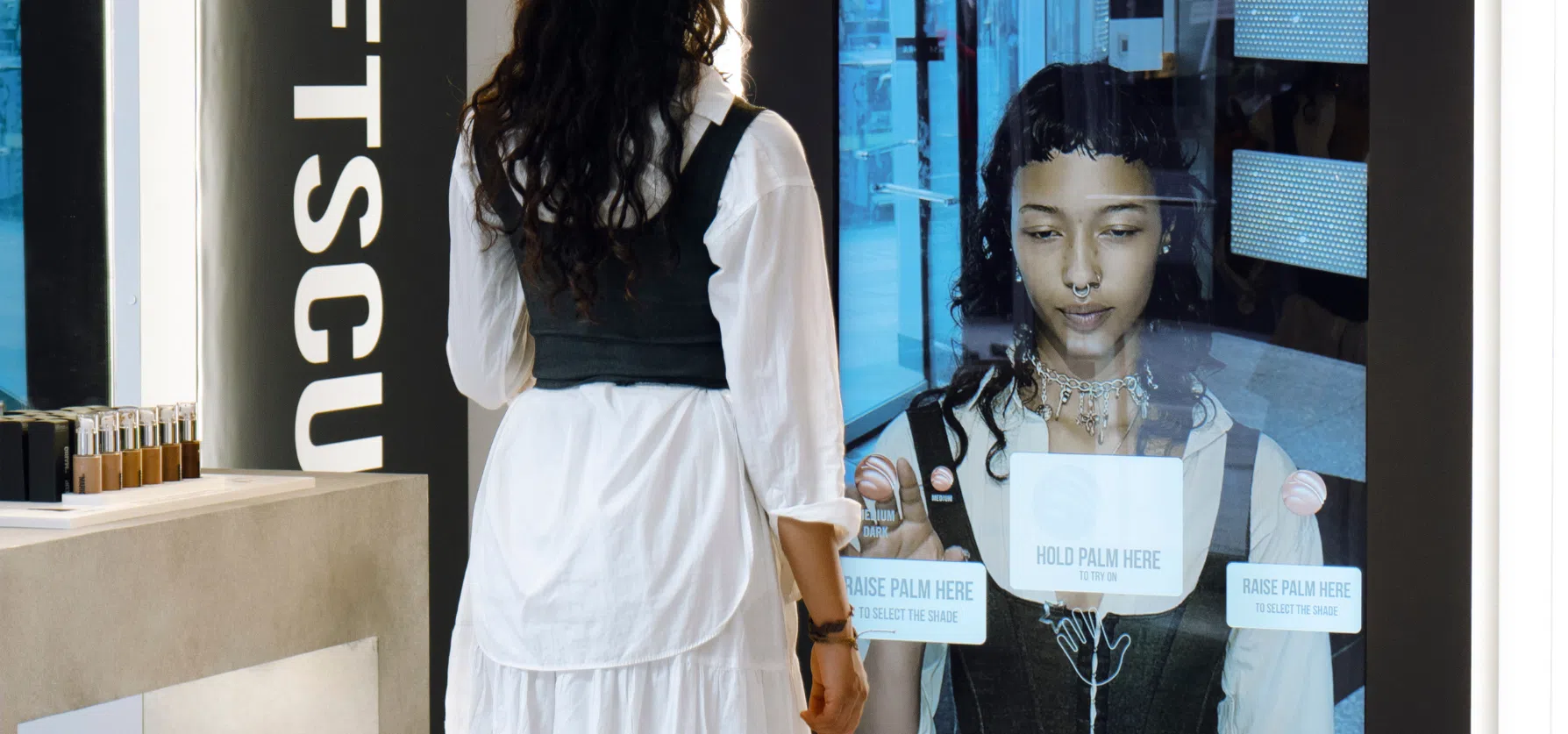Customer analytics provides insights that enhance shopping experiences, optimize operations, and drive growth. This guide explores how retailers use data collection and analysis to remain competitive in digital markets.
This article offers insights into the transformative potential of retail customer analytics for executives and marketing professionals alike. Learn how data-driven strategies are reshaping retail and discover practical approaches to implementing analytics solutions that deliver measurable results.
What Is Retail Analytics?
Retail analytics is the process of collecting, analyzing, and leveraging data to optimize retail operations, improve customer experiences, and drive sales. It involves tracking various data points, such as customer behavior, sales trends, inventory levels, and in-store interactions, to make informed business decisions.
With the rise of AI and digital transformation, retail analytics has evolved from basic sales tracking to advanced predictive insights. Businesses can now anticipate demand, personalize customer interactions, and streamline operations more effectively.
Why Is Customer Analytics Important for Retail?
Customer analytics are vital in modern retail, helping businesses understand their audience, refine strategies, and drive growth. By leveraging data, retailers can create more personalized and seamless shopping experiences across both online and physical stores.
Understanding Customer Preferences and Trends
Analytics help retailers uncover insights into shopping behaviors and preferences. By analyzing purchase history, browsing habits, and in-store interactions, businesses can anticipate needs and stock appropriate products. AI solutions like AR mirrors enhance this by tracking real-time product interactions, providing deeper consumer insights.
Enhancing Customer Experience and Engagement
Modern customers expect personalized experiences. AI-driven analytics enable tailored recommendations and frictionless shopping journeys. AR mirrors let shoppers virtually try on products, creating engaging experiences that boost convenience and strengthen brand loyalty.
Boosting Sales Through Data-Driven Personalization
Personalization effectively increases conversion rates and satisfaction. Customer data analysis allows for targeted campaigns, optimized pricing, and better product recommendations. AR mirrors enhance personalization by suggesting products based on individual preferences, increasing purchase likelihood.
In today’s retail landscape, businesses using customer analytics gain competitive advantages. By understanding behavior, improving engagement, and implementing AI solutions like AR mirrors, retailers can drive sales, optimize operations, and build lasting customer relationships.
Essential Customer Data Types for Retail Analytics
To fully leverage retail analytics, businesses must collect and analyze various types of customer data. These insights help retailers understand their audience, refine marketing strategies, and enhance overall customer experiences. Here’s a breakdown of the most critical customer data categories:
| Data Type | Description | Examples |
|---|---|---|
| Qualitative Data | Reveals customer emotions, opinions, and feedback | Customer reviews, social media mentions, survey responses |
| Quantitative Data | Focuses on numbers and measurable patterns | Sales figures, website traffic, footfall analytics |
| Identity Data | Provides information about who the customer is | Demographics, contact details, loyalty program participation |
| Behavioral Data | Tracks how customers interact with a brand | Purchase history, browsing behavior, engagement with interactive tools |
| Descriptive Data | Provides deeper insights into customer personality and preferences | Psychographic insights, lifestyle preferences, brand affinities |
By integrating all these data types—especially through AI-driven tools like AR mirrors—retailers can unlock valuable insights that improve customer engagement, optimize operations, and drive sales.

Turn store visits into actionable insights — gather rich customer data and elevate your retail approach with loook.ai loook.ai App
Categories of Retail Data Analytics
Retail data analytics is essential for understanding customer behavior, optimizing operations, and driving sales. It can be categorized into several types, each serving a unique role in shaping effective business strategies.
Descriptive Analytics: Understanding What Happened
Descriptive analytics examines historical data to uncover patterns and trends. Retailers apply this to identify successful products, peak traffic periods, and seasonal sales impacts.
Example: A beauty retailer uses AR mirrors to monitor lipstick shade trials. When data reveals shades frequently tried but rarely bought, they investigate pricing, formula, or availability issues.
Diagnostic Analytics: Understanding Why It Happened
Diagnostic analytics explores reasons behind trends. When products are tried but not purchased, these insights help identify if pricing, fit, or display issues are to blame, allowing retailers to refine strategies.
Example: A fashion retailer notices declining sales for a clothing line. AR mirror data shows customers try items but rarely buy them. Customer feedback reveals fit issues, prompting the retailer to adjust sizing and improve product descriptions.
Predictive Analytics: Forecasting Future Trends
Predictive analytics leverages AI and machine learning to forecast future trends based on historical patterns. This enables retailers to anticipate demand, optimize inventory levels, and plan targeted marketing campaigns.
Example: A luxury eyewear brand uses AI-driven AR mirrors to analyze which frame styles customers are trying on the most. By identifying emerging trends, the retailer stocks up on high-demand styles before they become mainstream, ensuring they capitalize on the trend early.
Prescriptive Analytics: Recommending the Best Course of Action
Prescriptive analytics recommends specific actions for maximizing success by analyzing customer behaviors and purchase patterns. This enables businesses to create personalized product suggestions, optimize store layouts, and adjust pricing in real-time.
Example: A skincare brand uses AI-powered AR mirrors to analyze preferences and suggest personalized routines. When customers view anti-aging products, the system recommends complementary items, increasing bundled purchase potential.
Real-Time Analytics: Making Instant Decisions
Real-time analytics enables instant responses to customer behavior through dynamic pricing, personalized promotions, and inventory updates, creating seamless shopping experiences.
Example: A fashion boutique uses AI-powered AR mirrors with real-time analytics. When customers virtually try on designer handbags, the system displays styling suggestions and limited-time discounts to encourage immediate purchases.
How Retail Customer Analytics is Utilized
Retail analytics drives data-informed decisions to enhance customer experiences, operations, and sales. Retailers use various tools to gather and analyze data for strategic improvement.
- In-Store Analytics Tools: Monitor traffic patterns and customer engagement to optimize layouts and product placement for smoother shopping experiences.
- Inventory Management Systems: Track stock levels in real-time to prevent shortages and surplus. AI-powered analytics enhance forecasting and supply chain efficiency.
- Business Intelligence (BI) Tools: Process retail data to generate reports and visual dashboards that reveal sales trends, customer preferences, and operational insights.
- Customer Relationship Management (CRM) Software: Organize customer data to enable personalized marketing, loyalty programs, and targeted promotions.
- Point-of-Sale (POS) Systems: Capture sales data and track purchasing behavior to inform pricing and inventory decisions.
- Predictive Analytics: Leverage AI to forecast trends, optimize pricing, and anticipate customer demand to stay ahead of market shifts.
AI-Powered AR Mirrors for Retail Customer Analytics
Unlike traditional data collection methods—which can be challenging with privacy-conscious customers reluctant to participate in surveys—AR mirrors transform data collection into an interactive, gamified experience. Customers willingly engage with these mirrors, providing valuable data while enjoying the novelty of virtual try-ons.
These mirrors track customer interactions, dwell time, and product preferences, offering insights into behavioral trends. They gather demographic data and analyze purchase intent, helping retailers optimize inventory, marketing, and merchandising strategies.
AR mirrors provide real-time feedback on trending products and use AI to predict demand and optimize pricing. Retailers can adjust inventory and promotions based on live data, resulting in higher conversion rates.
When connected to CRM, inventory management, and POS systems, AR mirrors enhance personalized marketing, inventory optimization, and sales tracking. They help brands reduce returns, minimize waste, and improve customer retention.


Leveraging Customer Data Insights to Maximize Retail Revenue
Retailers can maximize sales by leveraging data analytics to refine customer interactions, optimize operations, and create personalized experiences. AI-powered tools, including AR mirrors, play a crucial role in transforming data into actionable insights.
Customer Segmentation and Personalized Marketing Strategies
Retailers can use customer data to segment shoppers based on demographics, behavior, and preferences. AI-driven analytics enable targeted marketing campaigns, ensuring personalized promotions and recommendations that increase conversion rates.
Increase Operational Efficiency
Data analytics helps retailers streamline inventory management, optimize staffing, and reduce waste. Real-time insights allow businesses to adjust pricing, restock popular items, and enhance supply chain efficiency for higher profitability.
Hyper-Personalization with AI
AI analyzes customer preferences and past interactions to provide tailored shopping experiences. AI-powered AR mirrors enhance personalization by recommending products that match a shopper’s style, size, or skin tone, increasing engagement and purchase likelihood.
Virtual Try-Ons and Augmented Shopping Experiences
Augmented reality allows customers to try on products virtually, reducing hesitation and return rates. AR mirrors create immersive shopping experiences by enabling shoppers to experiment with different looks in real time, driving more confident purchase decisions.
Advanced Customer Data Utilization
Retailers can collect and analyze behavioral and purchase data to anticipate trends, optimize inventory, and improve customer retention. AI-powered insights help businesses predict demand, adjust marketing strategies, and develop data-driven sales approaches that boost revenue.
By integrating AI-powered analytics, AR mirrors, and predictive insights, retailers can create personalized, efficient, and immersive shopping experiences that drive higher sales and customer satisfaction.
Overcoming Challenges in Retail Analytics
Retail analytics offers valuable insights but presents challenges that must be addressed. AI tools, including AR mirrors, help navigate these obstacles while delivering seamless shopping experiences.
Data Privacy and Security Concerns
With GDPR and CCPA regulations, retailers must secure customer data through encryption, anonymization, and consent-based collection. AR mirrors can gather insights without storing personal information, maintaining compliance.
Integrating AI for Smarter Decision-Making
Merging AI analytics with existing systems requires seamless connectivity between AI tools, CRM, POS, and inventory systems. AR mirrors provide real-time behavioral insights for optimizing marketing, inventory, and pricing.
Managing Large-Scale Data and Extracting Actionable Insights
Extracting meaningful insights from vast data can be overwhelming. AI analytics automate analysis, identify patterns, and predict trends. AR mirrors deliver real-time data for quick decisions that enhance customer experience and sales.
By implementing AI solutions, secure data practices, and seamless system integration, retailers can maximize analytics potential to improve operations, personalize experiences, and increase revenue.
Conclusion: The Future of Retail Through Customer Analytics
These insights reveal shopper behaviors and preferences, enabling personalized experiences, streamlined operations, and increased revenue. AI technologies, particularly AR mirrors, have transformed data collection into interactive experiences. Leading retailers will embrace analytics while addressing privacy concerns. Through secure, customer-centric practices, they can create engaging experiences that foster loyalty and boost sales.
Retail’s future balances technology with human connection. As data analytics advances, retailers must prioritize customer value while respecting privacy. Those mastering this balance will define excellence in our data-driven landscape.
Ready to Transform Your Retail Analytics Strategy?
Implement AR Mirrors and Virtual Storefronts to gain valuable customer insights while delivering engaging shopping experiences. Contact us to learn how our AI-powered solutions collect data, enhance personalization, and drive conversions while protecting customer privacy. Start your data-driven retail journey today!
Explore our latest posts:
- Retailtainment: What It Means for Modern Retail (With Examples)
- AI-Driven OOH: Turning Physical Screens Into Intelligent Media Channels
- Interactive Out-of-Home Advertising: The Future of Public Brand Engagement
- The Business Impact of Immersive Shopping Experiences
- Customer Analytics in Retail Industry: How to Collect Insights and Drive Sales








